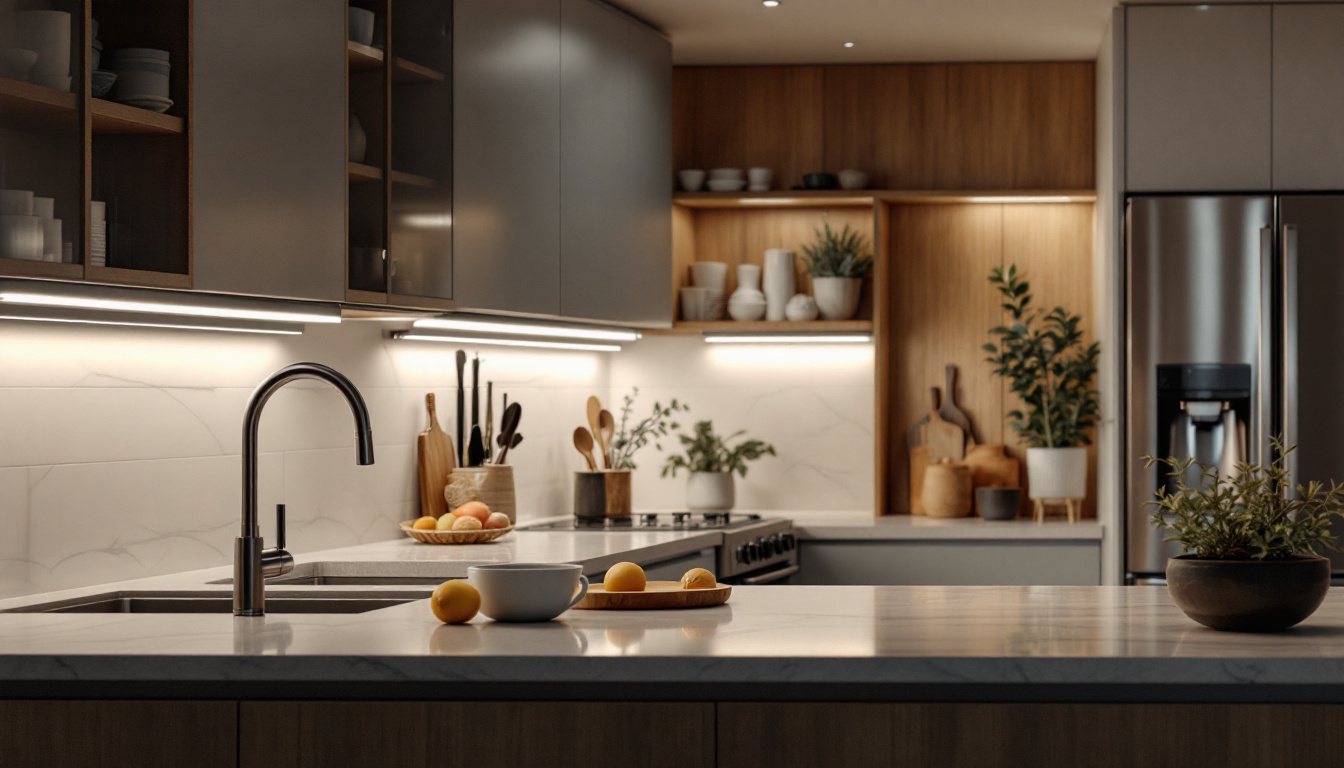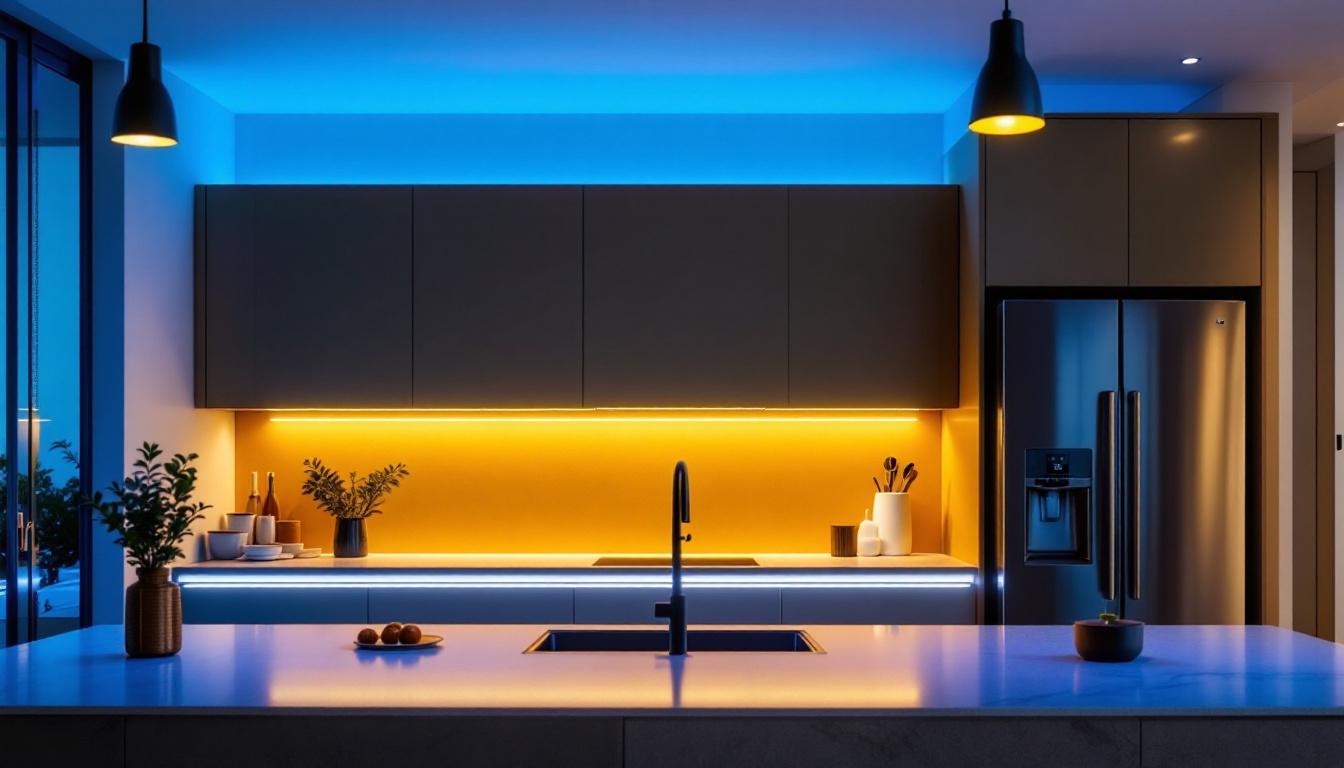
Lighting plays a crucial role in shaping the ambiance and functionality of any space. For lighting contractors, mastering the art of illumination is not just about installing fixtures; it’s about understanding the science behind light and how it interacts with various environments. This article delves into the secrets that lighting contractors can harness to elevate their craft and deliver exceptional results for their clients.
Before diving into advanced techniques, it is essential for lighting contractors to grasp the fundamental principles of lighting. This knowledge serves as the foundation for all lighting projects, ensuring that contractors can make informed decisions throughout the design and installation processes. A solid understanding of these basics not only enhances the aesthetic appeal of a space but also improves functionality and energy efficiency, which are critical factors in today’s environmentally conscious market.
Color temperature, measured in Kelvin (K), significantly influences the mood of a space. Warm white light (2700K-3000K) creates a cozy atmosphere, making it ideal for residential settings. In contrast, cool white light (4000K-5000K) is often preferred in commercial spaces, promoting alertness and productivity. Understanding these nuances allows contractors to tailor their lighting solutions to meet specific client needs. Furthermore, the use of adjustable color temperature fixtures, such as tunable white LEDs, can provide flexibility, allowing spaces to transition from a warm, inviting glow in the evening to a bright, energizing light during the day, catering to the varying activities and moods of the occupants.
There are several types of lighting, each serving a unique purpose. Ambient lighting provides overall illumination, while task lighting focuses on specific areas where activities occur, such as reading or cooking. Accent lighting highlights particular features, adding depth and interest to a space. A well-rounded contractor should be adept at integrating these types to create a balanced lighting scheme. Additionally, the strategic use of dimmers and smart lighting controls can enhance the versatility of these lighting types, allowing users to adjust brightness and color according to their preferences or the time of day. This adaptability not only contributes to a more personalized experience but also supports energy conservation, as lights can be dimmed or turned off in unoccupied areas, further reducing electricity costs and extending the lifespan of the fixtures.
Creating an effective lighting plan requires a blend of creativity and technical knowledge. Contractors must consider various factors, including the purpose of the space, the architectural features, and the preferences of the client. The interplay of light and shadow can dramatically alter perceptions of a room, making the role of a well-thought-out lighting design essential in both residential and commercial settings.
Engaging with clients to understand their vision is crucial. Conducting thorough consultations allows contractors to gather insights about the desired atmosphere, functionality, and aesthetic preferences. This information serves as a guiding compass throughout the design process. Furthermore, it is beneficial to explore the client’s lifestyle and how they intend to use the space at different times of the day. For instance, a cozy reading nook may require softer, warm lighting, while a home office might benefit from brighter, cooler tones to enhance focus and productivity.
Modern technology has transformed the way lighting plans are created. Utilizing lighting design software can streamline the process, allowing contractors to visualize their ideas in real-time. These tools help in simulating how different fixtures and layouts will affect the overall ambiance, making it easier to present options to clients. Additionally, many of these software solutions come equipped with features that allow for energy consumption analysis, helping contractors suggest sustainable lighting options that not only meet aesthetic goals but also align with energy efficiency standards. By incorporating LED fixtures and smart lighting controls, contractors can further enhance the functionality of the space while reducing long-term operational costs.
In today’s environmentally conscious world, energy efficiency is more than just a trend; it’s a necessity. Lighting contractors must be well-versed in sustainable practices that not only benefit the environment but also save clients money in the long run. As the demand for greener solutions continues to rise, understanding the principles of energy efficiency becomes crucial in meeting client expectations and regulatory standards.
LED technology has revolutionized the lighting industry, offering longer lifespans and lower energy consumption compared to traditional incandescent bulbs. Educating clients about the benefits of LED fixtures can lead to significant savings on energy bills and maintenance costs. Additionally, many regions offer incentives for using energy-efficient products, making them an attractive option for clients. Beyond LEDs, it’s essential to consider the color temperature and lumens per watt, as these factors influence not only the quality of light but also the overall energy efficiency of the installation. By presenting a range of options, contractors can help clients make informed decisions that align with their aesthetic preferences and functional needs.
Smart lighting systems provide an innovative way to enhance energy efficiency. These systems allow users to control their lighting remotely, set schedules, and adjust brightness levels based on natural light availability. By integrating smart technology into their designs, contractors can offer clients greater control and flexibility, ultimately leading to reduced energy consumption. Moreover, smart lighting can be integrated with other smart home systems, creating a cohesive environment that optimizes energy use throughout the home. This interconnected approach not only enhances convenience but also promotes a more sustainable lifestyle, as users can monitor and adjust their energy consumption in real-time, making it easier to adopt energy-saving habits.
Furthermore, the implementation of daylight harvesting techniques can significantly complement smart lighting solutions. By utilizing sensors that detect natural light levels, contractors can design systems that automatically adjust artificial lighting based on the amount of sunlight entering a space. This not only maximizes energy efficiency but also improves the overall ambiance of the environment, creating a more pleasant and productive atmosphere for occupants. As the technology continues to evolve, staying informed about the latest advancements in smart lighting will enable contractors to provide cutting-edge solutions that meet the growing demands for sustainability and energy efficiency.
Successful lighting installation goes beyond simply hanging fixtures. It requires precision, attention to detail, and a thorough understanding of electrical systems. Mastering these techniques is essential for ensuring safety and achieving the desired lighting effects.
Adhering to local electrical codes is paramount for any lighting contractor. Understanding the intricacies of wiring and ensuring that all installations meet safety standards protects both the contractor and the client. Regular training and staying updated on code changes can help maintain compliance.
Proper placement of fixtures can dramatically influence the effectiveness of a lighting design. Contractors should consider factors such as ceiling height, room dimensions, and the purpose of the space when determining fixture placement. Additionally, ensuring that fixtures are aligned correctly can prevent unwanted shadows and glare, enhancing the overall experience.
Lighting is a powerful tool for creating ambiance. The right combination of brightness, color, and placement can transform a space from ordinary to extraordinary. Understanding how to manipulate these elements is a key skill for any lighting contractor.
Layering different types of lighting—ambient, task, and accent—creates depth and visual interest. By strategically combining these layers, contractors can craft spaces that are both functional and inviting. For instance, a well-lit kitchen may feature ambient lighting for general use, task lighting above work areas, and accent lighting to highlight decorative elements.
Dimmers provide an easy way to adjust the intensity of light, allowing clients to customize their environment based on their needs. Incorporating dimmer switches into designs not only enhances flexibility but also contributes to energy savings. Educating clients on how to use these controls effectively can further enhance their experience.
The lighting industry is constantly evolving, with new technologies and design trends emerging regularly. For lighting contractors, staying informed about these changes is crucial for maintaining a competitive edge.
Advancements in lighting technology, such as tunable white LED systems and human-centric lighting, offer exciting opportunities for contractors. These innovations allow for greater customization and can significantly enhance the user experience. Keeping abreast of these technologies can empower contractors to offer cutting-edge solutions to their clients.
Design trends can vary widely, from minimalist aesthetics to bold, statement-making fixtures. Understanding current trends enables contractors to cater to diverse client preferences. Whether it’s incorporating vintage-inspired designs or embracing sleek, modern lines, being adaptable to changing tastes is essential for success.
Successful lighting contractors understand that their work extends beyond the installation process. Building strong relationships with clients fosters trust and can lead to repeat business and referrals.
Open and honest communication is vital throughout the project lifecycle. Keeping clients informed about timelines, potential challenges, and progress helps manage expectations and builds rapport. Regular check-ins can also provide opportunities for feedback, ensuring that the final result aligns with the client’s vision.
After the installation is complete, offering ongoing support can set a contractor apart from the competition. Providing clients with maintenance tips, troubleshooting assistance, and information about warranty coverage fosters a sense of reliability and care. This level of service can lead to positive reviews and recommendations.
Mastering the art of lighting involves a combination of technical knowledge, design sensibility, and client engagement. By understanding the fundamentals, embracing new technologies, and prioritizing customer relationships, lighting contractors can elevate their craft and deliver exceptional results. As the industry continues to evolve, those who adapt and innovate will thrive, illuminating spaces in ways that inspire and delight.
Ready to take your lighting projects to the next level? At LumenWholesale, we provide lighting contractors like you with the highest quality, spec-grade lighting products at prices that can’t be beaten. Say goodbye to unnecessary markups and hello to a vast selection of reliable, high-performance lighting that meets the most rigorous industry standards. With the convenience of free shipping on bulk orders, you can trust that you’re getting premium lighting at the best value — every time. Elevate your craft with the perfect blend of quality, affordability, and convenience at LumenWholesale.

Discover how cabinet LED lights are revolutionizing the work of lighting contractors by enhancing efficiency, reducing energy costs, and offering versatile design options.

Discover the transformative power of 5000K LED lighting with our comprehensive guide tailored for lighting contractors.

Discover how LED lighting under kitchen cabinets can transform your cooking space into a well-lit, stylish haven.

Discover essential insights into wrap lighting fixtures with our comprehensive guide tailored for lighting contractors.